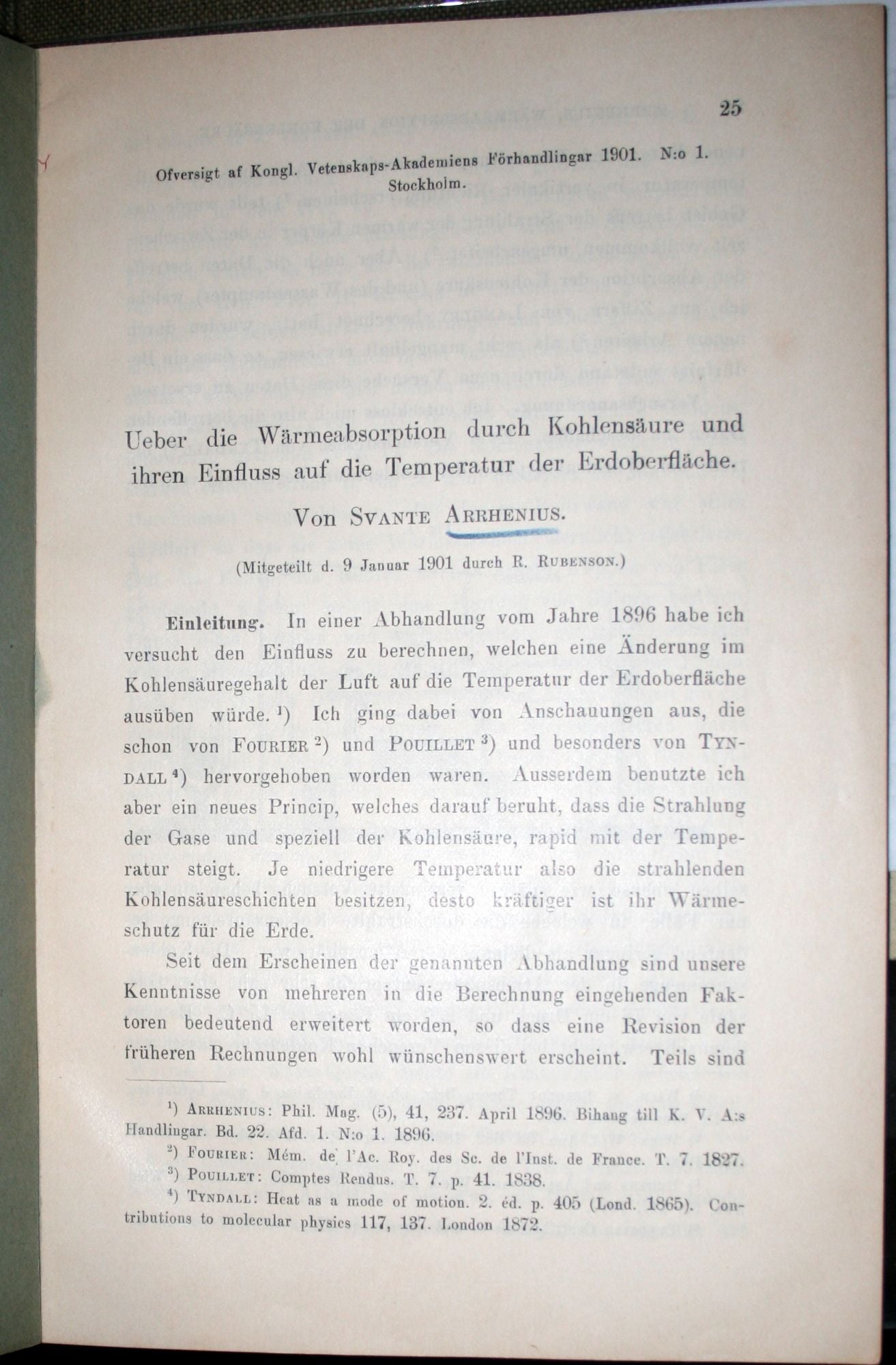Ueber die Warmeabsorption durch Kohlensaure und ihren Einfluss auf die Temperatur der Erdoberflache
Stockholm: Ofversigt af Kongl. Vetenskaps-Akademiens Forhandlingar 1901. First Edition. 25-58 pages plus blank wrappers as issued. 8vo. The stamp of C. R. Van Hise on the front wrapper, and pencilled annotation (presumably author's presentation). Author's name underlined on first page. Near Fine. Wraps. [23627]
A paper by Nobel Laureate Arrhenius related to Climate Change: "About the heat absorption by carbon dioxide and its influence on the temperature of the earth's surface" With the stamp of C. R. Van Hise (Geologist and eventual President of University of Wisconsin). Arrhenius won the Nobel Prize in Chemistry in 1903 "in recognition of the extraordinary services he has rendered to the advancement of chemistry by his electrolytic theory of dissociation." Later in life, Arrhenius became interested in other phenomena including meteorology and cosmic physics. He is also credited with the first quantitative analysis of carbonic acid (carbon dioxide) and it's role in climate change. His first paper on the subject was published in 1887 and provided the first quantitative attempts to measure the Greenhouse Effect.
"A hundred years ago, Swedish scientist Svante Arrhenius asked the important question “Is the mean temperature of the ground in any way influenced by the presence of the heat-absorbing gases in the atmosphere?” He went on to become the first person to investigate the effect that doubling atmospheric carbon dioxide would have on global climate. The question was debated throughout the early part of the 20th century and is still a main concern of Earth scientists today...By 1904, Arrhenius became concerned with rapid increases in anthropogenic carbon emissions and recognized that “the slight percentage of carbonic acid in the atmosphere may, by the advances of industry, be changed to a noticeable degree in the course of a few centuries.” (NASA Earth Observatory) Arhennius viewed this as a potential benefit leading to overall warming and better food production. He could not have anticipated the sharp rise that we've seen in atmospheric carbon dioxide since that time. The paper offered here expand on the work in Arhennius's first paper in this important area and explore some of his later ideas. Riesenfeld, Svante Arrhenius #69
ITEM SOLD



